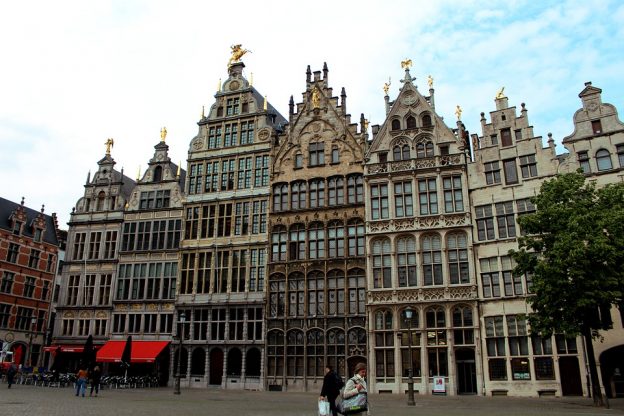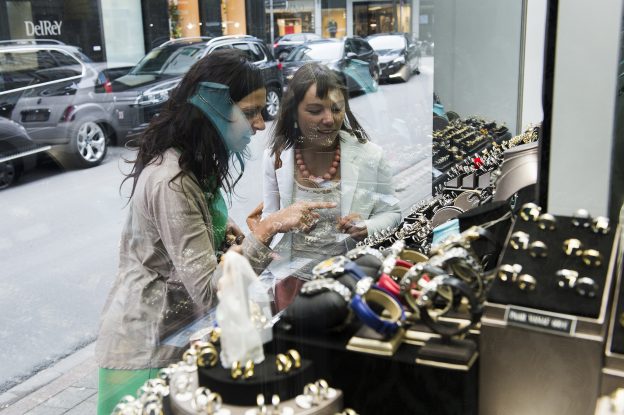Antwerp-Diamond City
What, you may ask does Antwerp – Diamond City actually mean? Pelikaanstraat, Schupstraat, Hoveniersstraat and Rijfstraat are the four streets where the “Antwerp World Diamond Center” aka Diamond City, is located. It is right next to the renovated main train station; and Cathedral of Our Lady, on the main square. These are both incredibly beautiful buildings. and anchor points to this important destination, especially exciting if you are a Diamond Jewellery, architecture and art fan.
Antwerp is known worldwide for the Rubens House-museum, the former home and studio of the great baroque master Peter Paul Rubens. The museum holds an unparalleled amount of treasures from the master and is a must-see for any Antwerp visitor. The four roads hold an additional curiosity and treasure: 84% of all rough diamonds and 50% of all faceted diamonds on the planet.

Antwerp-Main-Square
A bit of history
At the beginning of the 15th-century, Antwerp was described by many travellers as the most beautiful city in the world.
In the 16th-century, Antwerp flourished. At that time, it was the commercial heart of Europe, and Diamonds occupied an important part of the trade. So much so that the King of France, François I, did not turn to Paris for his Diamond jewels, but commissioned work from the artisans of Antwerp.
At the end of the 17th-century, Amsterdam became known as a privileged city that offered religious and civil freedoms, while simultaneously building a monopoly in the Diamond industry and trade.
Antwerp’s artisans, we very demotivated with arrivals of lower quality gems and used all their skill to transform mediocre stones into exquisitely faceted gems. This would earn them the fame that the city enjoys today and would be part of the 19th-century renaissance of the city. Becoming once again known as the Mecca of the Diamond.
Antwerp continued to evolve throughout the 20th century up to the present day. Today it houses Europe’s second largest port and is also the world’s centre for rough Diamonds.

Antwerp diamond showcase-Copyright Flickr / Visitflanders
Trust is the keyword
To close an agreement, just shake hands. This gesture is more valuable than a paper contract. Diamonds are very expensive and money circulates several times in the market. The importance of the community is fundamental, especially for the great Jewish trading tradition. Historically respected. The older generations of Jewish jewellers and artisans hope that their children will take over their businesses and traditions with the same passion, to protect their good names.
Antwerp and its Diamonds in global figures
Strolling through the neighbourhood does not give the impression of being in the global Diamond paradise, even though the figures speak for themselves: the Diamond industry comprises 1,700 individual companies, representing 6,600 direct jobs and 26,000 indirect jobs. 70 nationalities work together every day in this global Diamond centre.
In 2003 It was in this neighbourhood where a gang of Italian robbers famously pulled off one of the most famous jewel robberies in history, racking up a booty of 100 million euros!
One last detail
Although today there are traders of many nationalities in the Antwerp Diamond district, it is advisable not to do so on Saturdays, since almost half of the sellers do not work. In fact, according to Jewish tradition, Saturday is a day of celebration and therefore of rest.
We do hope that you enjoyed the article. Come on over to the Rocks & Co. Diamond Jewellery section and have a wander!
Repost from July 2018




